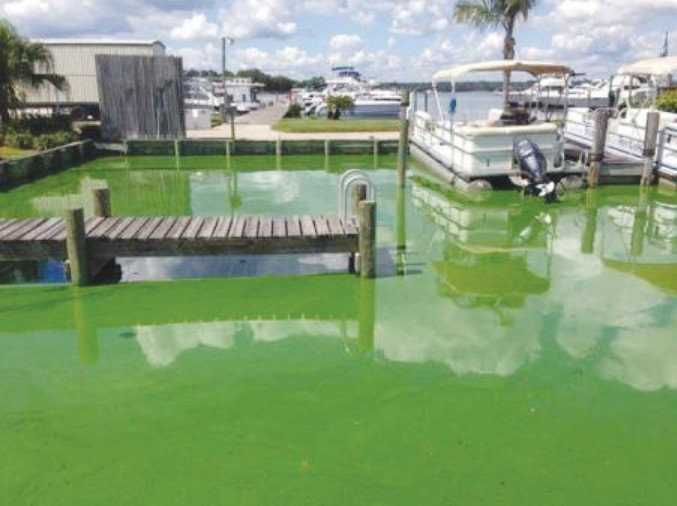Early outbreak of algae blooms detected in St. Johns River, Doctors Lake, Black Creek
CLAY COUNTY – Algae blooms on St. Johns River, widespread from Lake George to Duval County, came earlier this year, experts said.
Pockets of blue-green algae, also called cyanobacteria, were …
This item is available in full to subscribers.
Attention subscribers
To continue reading, you will need to either log in to your subscriber account, below, or purchase a new subscription.
Please log in to continueDon't have an ID?Print subscribersIf you're a print subscriber, but do not yet have an online account, click here to create one. Non-subscribersClick here to see your options for subscribing. Single day passYou also have the option of purchasing 24 hours of access, for $1.00. Click here to purchase a single day pass. |
Early outbreak of algae blooms detected in St. Johns River, Doctors Lake, Black Creek
CLAY COUNTY – Algae blooms on St. Johns River, widespread from Lake George to Duval County, came earlier this year, experts said.
Pockets of blue-green algae, also called cyanobacteria, were spotted and tested in multiple areas of Clay County’s large section of the river. The most common areas are Doctors Lake, near Black Creek and the Shands Bridge.
St. Johns River Water Management District officials are monitoring the outbreak. Christine Mundy, bureau chief of Water Resource Information, called the algae prevalent.
When the District finds a bloom, it’s sampled and sent to a laboratory, Mundy said. An analysis shows staff what the dominant species of algae is, and the District can identify any toxins.
The state Department of Environmental Protection’s Algae Bloom dashboard lists six algae blooms near Doctors Lake, two near Black Creek and two near the Shands Bridge.
“I don’t think staff has noticed anything unusual. We’re certainly out and observing at all the sites we regularly monitor,” Mundy said. “[Algae] occurrences are steady, but no massive increases from last year.”
Algae is a part of natural ecosystem but added nutrients and warm temperatures spur rapid growth. Symptoms of algae exposure include nausea, rashes, stomach cramps, vomiting and diarrhea, according to the state Department of Health.
The cause of algae blooms is multifaceted. Agricultural runoff, fertilizer overuse and human wastewater or septic tanks in the river are factors. The blooms feed on nitrogen and phosphorus.
“Think about those things acting as fertilizer for the algae in the water,” Mundy said.
St. Johns Riverkeeper Lisa Rinaman said the algae headlines that South Florida garners doesn’t diminish the problems Northeast Florida faces with pollution and algae. Trucks from South Florida dumping sewage in the basin of the St. Johns River was widely reported last year.
Palatka and Lake George have seen the most blooms. Rinaman said when those blooms die off their nutrients can flow north.
“In turn, it makes it more likely for an algae bloom downstream, basically a domino effect,” Rinaman said. “When we see something like that, we’re highly concerned about what is in Clay County’s future in regards to harmful algae blooms.”
Riverkeeper officials will attend a meeting of the Tallahassee Blue-Green Algae Task Force, group of five Florida academics started by Gov. Ron DeSantis in April. The RIverkeeper will host a community meeting at Orange Park Town Hall 6:30 p.m. June 12 to raise awareness.







